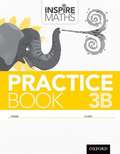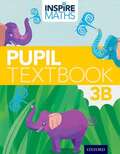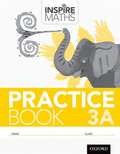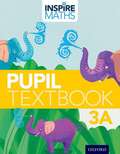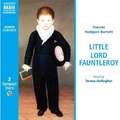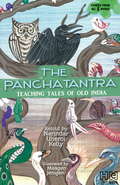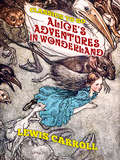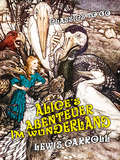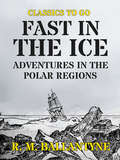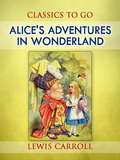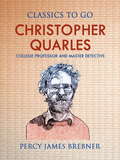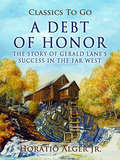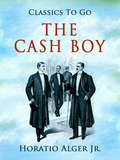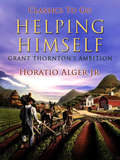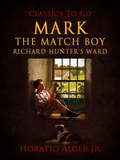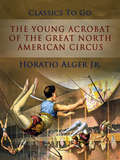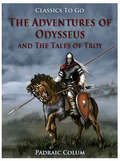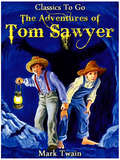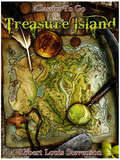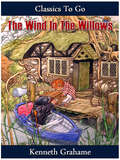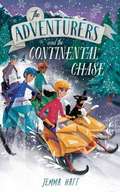- Table View
- List View
Renewable Energy Optimization, Planning and Control: Proceedings of ICRTE 2022 (Studies in Infrastructure and Control)
by Anita Khosla Mohan KolheThis book gathers selected high-quality research papers presented at International Conference on Renewable Technologies in Engineering (ICRTE 2022) organized by Manav Rachna International Institute of Research & Studies, Faridabad, Haryana, India, during October 7–8, 2022. The book includes conference papers on the theme ‘Computational Techniques for Renewable Energy Optimization,’ which aims to bring together leading academic scientists, researchers, and research scholars to exchange and share their experiences and research results on all aspects of renewable energy integration, planning, control, and optimization. It also provides a premier interdisciplinary platform for researchers, practitioners, and educators to present and discuss the most recent innovations, trends, and concerns as well as practical challenges encountered and solutions adopted in the fields of renewable energy and resources.
Inspire Maths: Practice Book 3B (PDF)
by Ho Fong Chelvi Ramakrishnan Michelle ChooInspire Maths builds firm foundations and a deep understanding of mathematical concepts through a concrete-pictorial-abstract approach, emphasising mastery to help children become confident and independent mathematicians. These Practice Books provide carefully structured questions to reinforce concepts introduced in the Pupil Textbooks and to provide varied, frequent practice. A wealth of activities develop fluency, build mathematical confidence and lead towards mastery.
Inspire Maths: Pupil Book 3b
by Fong Ho Kheong Chelvi Ramakrishnan Michelle Choo Carole Skinner Simon D'Angelo Elizabeth GibbsInspire Maths builds firm foundations and a deep understanding of mathematical concepts through a concrete-pictorial-abstract approach. This Pupil Textbook provides a scaffolded introduction to each new learning objective, guided practice activities, opportunities for further practice, and suggestions for how parents can support learning at home.
Inspire Maths: Practice Book 3A (PDF)
by Ho Fong Chelvi Ramakrishnan Michelle ChooInspire Maths builds firm foundations and a deep understanding of mathematical concepts through a concrete-pictorial-abstract approach, emphasising mastery to help children become confident and independent mathematicians. These Practice Books provide carefully structured questions to reinforce concepts introduced in the Pupil Textbooks and to provide varied, frequent practice. A wealth of activities develop fluency, build mathematical confidence and lead towards mastery.
Inspire Maths: Pupil Book 3a
by Fong Ho Kheong Chelvi Ramakrishnan Michelle Choo Carole Skinner Simon D'Angelo Elizabeth GibbsInspire Maths builds firm foundations and a deep understanding of mathematical concepts through a concrete-pictorial-abstract approach. This Pupil Textbook provides a scaffolded introduction to each new learning objective, guided practice activities, opportunities for further practice, and suggestions for how parents can support learning at home.
Little Lord Fauntleroy
by Frances Hodgson BurnettFrances Hodgson Burnett's conviction that love conquers all is memorably embodied in this classic rags-to-riches tale of an American boy who is transported from the mean streets of nineteenth-century New York to the splendor of his titled grandfather's English manor. Polly Hovarth writes that Little Lord Fauntleroy "was the Harry Potter of his time and Frances Hodgson Burnett was as celebrated for creating him as J. K. Rowling is for Potter." During the 1880s, fashions in the book became popular with velvet Lord Fauntleroy suits being sold, as well as other Fauntleroy merchandise such as velvet collars, playing cards, and chocolates. The Reginald Birch illustrations for the 1886 edition sparked a very romantic style of dress for boys which would endure into the early twentieth century.
THE PANCHATANTRA: TEACHING TALES OF OLD INDIA
by Narindar Uberoi KellyA RAT THAT ATE IRON. A BIRD WITH TWO HEADS. FOUR GREEDY TREASURE-SEEKERS. A DOG THAT WENT TO FOREIGN LANDS TO FIND FOOD. These are only a few of the colourful stories that long, long ago – it is said – a sage told three princes so that they could learn to live wisely. Instead of giving them boring lessons, the learned tutor told them fables alive with animals and human characters faced with difficult situations about friendship, cooperation, quarrels and ambition. The tales told by Pandit Vishnu Sharma about 2,500 years ago offer a map of how to make one’s way through life in a moral and wise manner. These stories of friends and enemies, cruelty and deceit, honour and humility, foolishness and cunning, deception and honesty, tell us about the choices we have and how to find a solution to tough questions of right and wrong. This all-colour, beautifully illustrated edition contains stories retold from all five books of the Panchatantra and is designed to make it easy for readers to move from story to story, and across stories within stories – making it a must-have for readers young and old.
Meri Bindi (My Bindi)
by Anu AnandBindis can be big and small, red and blue, long and sparkly! Join Noor and Neel as their tiger friend Moochhar Singh leads them to a land filled with colourful characters, all of them wearing their favourite bindis! The first of the Meri Duniya (My World) series of bilingual Hindi–English books, Meri Bindi (My Bindi) is filled with imaginative handmade illustrations explained with three lines of text – in Hindi, how to say it, and the English translation.
Going Home
by Rukmini BanerjiA little girl hurries home from school. Follow her as she describes all the exciting encounters on her way home.
Alice's Adventures in Wonderland: Webster's Italian Thesaurus Edition (Classics To Go)
by Lewis CarrollAlice's Adventures in Wonderland (commonly shortened to Alice in Wonderland) is an 1865 novel written by English author Charles Lutwidge Dodgson under the pseudonym Lewis Carroll. It tells of a young girl named Alice falling through a rabbit hole into a fantasy world populated by peculiar, anthropomorphic creatures. The tale plays with logic, giving the story lasting popularity with adults as well as with children. It is considered to be one of the best examples of the literary nonsense genre. Its narrative course, structure, characters, and imagery have been enormously influential in both popular culture and literature, especially in the fantasy genre. (Wikipedia)
Alice's Abenteuer im Wunderland: Large Print (Classics To Go)
by Lewis CarrollAlice im Wunderland gilt als eines der hervorragenden Werke aus dem Genre des literarischen Nonsens. Gemeinsam mit der 1871 erschienenen Fortsetzung Alice hinter den Spiegeln wird dieses Kinderbuch zu den Klassikern der Weltliteratur gezählt. So ist die Erzählung heute beispielsweise Bestandteil der ZEIT-Bibliothek der 100 Bücher. Die britische Zeitung The Guardian nahm 2009 sowohl Alice im Wunderland als auch Alice hinter den Spiegeln in die Liste der 1000 Romane auf, die jeder gelesen haben muss. Die Erzählweise und -struktur, die Figuren und die Metaphorik haben unverändert großen kulturellen Einfluss. Alice im Wunderland erfuhr Adaptionen für die Bühne und im Film. Figuren der Erzählung, wie zum Beispiel die Grinsekatze, der Jabberwocky, der Märzhase und der verrückte Hutmacher, oder einzelne Episoden, wie beispielsweise die der Teegesellschaft, in die Alice hineingerät, wurden in der Popkultur immer wieder aufgegriffen und zitiert. (Wikipedia)
Fast in the Ice Adventures in the Polar Regions: Or Adventures In The Polar Regions (1870) (Classics To Go)
by R. M. BallantyneOne day, many years ago, a brig cast off from her moorings, and sailed from a British port for the Polar Seas. That brig never came back. Many a hearty cheer was given, many a kind wish was uttered, many a handkerchief was waved, and many a tearful eye gazed that day as the vessel left Old England, and steered her course into the unknown regions of the far north. (Goodreads)
Alice's Adventures in Wonderland: Webster's Italian Thesaurus Edition (Classics To Go)
by Lewis CarrollAlice's Adventures in Wonderland (commonly shortened to Alice in Wonderland) is an 1865 novel written by English author Charles Lutwidge Dodgson under the pseudonym Lewis Carroll. It tells of a young girl named Alice falling through a rabbit hole into a fantasy world populated by peculiar, anthropomorphic creatures. The tale plays with logic, giving the story lasting popularity with adults as well as with children. It is considered to be one of the best examples of the literary nonsense genre. Its narrative course, structure, characters, and imagery have been enormously influential in both popular culture and literature, especially in the fantasy genre. (Wikipedia)
Christopher Quarles: College Professor And Master Detective (Classics To Go)
by Percy James BrebnerProfessor Quarles is the most lovable, the most learned, the most unpoliceman-like detective we have yet met. As a matter of fact he is not a detective at all, but a scholar, specialising in philosophy and keenly interested in the human motives behind every act. Criminal cases interest him only when it is necessary to find this motive. He confesses that he does not make his theory from facts. He finds his theory of motives first and makes the facts fit it. It is an interesting method, and as after all human nature, even if warped and twisted out of humanity by circumstances, is at the back of every crime, the professor is not so far wrong when he insists that philosophy and imagination are good guides for detective work. (Goodreads)
A Debt of Honor: The Story Of Gerald Lane's Success In The Far West (Classics To Go)
by Jr. AlgerGerald Lane heads west to seek his fortune and claim the money owed his father by an unscrupulous former business partner.
Young Captain Jack / The Son of a Soldier: The Son Of A Soldier (The World At War)
by Edward StratemeyerHoratio Alger, Jr.; January 13, 1832 – July 18, 1899) was a prolific 19th-century American author, best known for his many juvenile novels about impoverished boys and their rise from humble backgrounds to lives of middle-class security and comfort through hard work, determination, courage, and honesty. His writings were characterised by the "rags-to-riches" narrative, which had a formative effect on America during the Gilded Age. His popularity—and income—dwindled in the 1890s. In 1896, he had (what he called) a "nervous breakdown"; he relocated permanently to his sister's home in South Natick, Massachusetts. Before his death, Alger asked Edward Stratemeyer to complete his unfinished works.[56] In 1901, “Young Captain Jack” was completed by Stratemeyer and promoted as Alger's last work. Alger once estimated that he earned only $100,000 between 1866 and 1896; at his death he had little money, leaving only small sums to family and friends. His literary work was bequeathed to his niece, to two boys he had casually adopted, and to his sister Olive Augusta, who destroyed his manuscripts and his letters at his wish. (Excerpt from Wikipedia)
The Cash Boy: Inspirational Story About A Poor Boy Ascending To Great Wealth And Fame (Classics To Go)
by Jr. AlgerFrank Fowler leaves his small town home shortly after the death of the only mother he has ever known to make his fortune in New York. These small town adventures are fully loaded with stock Alger characters…
Helping Himself: Grant Thornton's Ambition (Classics To Go)
by Jr. AlgerIn Alger's books real boys are seen doing honest things and being successful. Helping Himself begins with Deacon Gridley who was a farmer. Gridley had managed to save a little money. His thriftiness meant that he had also hoarded all of the interest. Here our young hero enters the tale.
Mark the Match Boy (Classics To Go)
by Jr. AlgerThe book takes the reader through the Children's Lodging House, the Bowery Theatre, and the Fulton ferry, besides giving one a description of the life of bootblacks, match boys, apple girls, Bowery B'hoys and other assorted street creatures living in New York.
The Young Acrobat of The Great North American Circus (Classics To Go)
by Jr. AlgerKit, a young teen boy, is an orphan. He is cheated of his inheritance by his guardian. His guardian sends him off to work with a brutal, stupid blacksmith. The boy runs away. He joins the circus. He is followed by the blacksmith. The boy stays away from him. He becomes a big star in the circus. Later, he is restored to his rightful place with the help of a man who was his father's friend.(Excerpt from Wikipedia)
The Adventures of Odysseus and The Tales of Troy: Revised Edition Of Original Version (Classics To Go)
by Padraic ColumAlso known as “The Children’s Homer,” this is Irish writer Padraic Colum’s retelling of the events of Homer’s Iliad and Odyssey for young people. Colum’s rich, evocative prose narrates the travails of Odysseus, King of Ithaca: his experiences fighting the Trojan War, and his ten years’ journey home to his faithful wife Penelope and his son Telemachus. (Summary by Elizabeth Klett )
The Adventures of Tom Sawyer: Revised Edition Of Original Version (Classics To Go #305)
by Mark TwainTom Sawyer lived with his Aunt Polly and his half-brother, Sid. Tom dirties his clothes in a fight and is made to whitewash the fence the next day, as punishment. He cleverly persuades his friends to trade him small treasures for the privilege of doing his work. In Sunday school, Tom does not manage to get a Bible because Mr. Walters knew he was trading tickets. Tom falls in love with Becky Thatcher, a new girl in town, and persuades her to get "engaged" by kissing him. But their romance collapses when she learns Tom has been "engaged" previously, to a girl named Amy Lawrence. Shortly after being shunned by Becky, Tom accompanies Huckleberry Finn to the graveyard at night, where they witnessed the murder of Dr. Robinson. Tom, Huck, and Joe Harper run away to an island. While enjoying their newfound freedom, the boys become aware that the community is sounding the river for their bodies. Tom sneaks back home one night to observe the commotion. After a brief moment of remorse at his loved ones' suffering, Tom is struck by the idea of appearing at his funeral. Back in school, Tom gets himself back in Becky's favour after he nobly accepts the blame for a book she has ripped. Soon, Muff Potter's trial begins, in which Tom testifies against 'Injun Joe'. Potter is acquitted, but 'Injun Joe' flees the courtroom through a window. Tom then begins to fear for his life as 'Injun Joe' is at large and can easily find him. Summer arrives, and Tom and Huck go hunting for buried treasure in a haunted house. After venturing upstairs they hear a noise below. Peering through holes in the floor, they see 'Injun Joe' disguised as a deaf-mute Spaniard; 'Injun Joe' and his companion plan to bury some stolen treasure of their own. From their hiding spot, Tom and Huck wriggle with delight at the prospect of digging it up. Huck begins to shadow 'Injun Joe' nightly, watching for an opportunity to nab the gold. Meanwhile, Tom goes on a picnic to McDougal's Cave with Becky and their classmates. That same night, Huck sees 'Injun Joe' and his partner making off with a box. He follows and overhears their plans to attack the Widow Douglas. By running to fetch help, Huck stops the violence and becomes an anonymous hero. A week later, Tom takes Huck to the cave and they find the box of gold, the proceeds of which are invested for them. The Widow Douglas adopts Huck, and, when Huck attempts to escape civilised life, Tom tricks him into thinking if Huck returns to the widow, he can join Tom's robber band. Reluctantly, Huck agrees and goes back to the Widow Douglas.
Treasure Island: Prince Otto (Classics To Go)
by Robert StevensonThe narrator, James "Jim" Hawkins, is the young son of the owners of the Admiral Benbow Inn. An old drunken seaman named Billy Bones becomes a long-term lodger at the inn, only paying for about the first week of his stay. Jim quickly realizes that Bones is in hiding, and that he particularly dreads meeting an unidentified seafaring man with one leg. Some months later, Bones is visited by a mysterious sailor named Black Dog. Their meeting turns violent, Black Dog flees and Bones suffers a stroke. While Jim cares for him, Bones confesses that he was once the mate of a notorious late pirate, Captain Flint, and that his old crew-mates want Bones' sea chest. Some time later, another of Bones' crew mates, a blind man named Pew, appears at the inn and forces Jim to lead him to Bones. Pew gives Bones a paper. After Pew leaves, Bones opens the paper to discover it is marked with the Black Spot, a pirate summons, with the warning that he has until ten o'clock to meet their demands. Bones drops dead of apoplexy (in this context, a stroke) on the spot. Jim and his mother open Bones' sea chest to collect the amount due to them for Bones' room and board, but before they can count out the money that they are owed, they hear pirates approaching the inn and are forced to flee and hide, Jim taking with him a mysterious oilskin packet from the chest. The pirates, led by Pew, find the sea chest and the money, but are frustrated that there is no sign of "Flint's fist". Customs men approach and the pirates escape to their vessel, all except for Pew, who is accidentally run down and killed by the agents' horses.... (Excerpt from Wikipedia)
The Wind in the Willows: Revised Edition Of Original Version (Classics To Go)
by Kenneth GrahameAt the start of the book, it is spring time: the weather is fine, and good-natured Mole loses patience with spring cleaning. He flees his underground home, heading up to take in the air. He ends up at the river, which he has never seen before. Here he meets Ratty (a water rat), who at this time of year spends all his days in, on and close by the river. Rat takes Mole for a ride in his rowing boat. They get along well and spend many more days boating, with Rat teaching Mole the ways of the river. One summer day shortly thereafter, Rat and Mole find themselves near the grand Toad Hall and pay a visit to Toad. Toad is rich (having inherited wealth from his father): jovial, friendly and kind-hearted but aimless and conceited, he regularly becomes obsessed with current fads, only to abandon them as quickly as he took them up. Having only recently given up boating, Toad's current craze is his horse-drawn caravan. In fact, he is about to go on a trip, and persuades the reluctant Rat and willing Mole to join him. The following day (after Toad has already tired of the realities of camp life and sleeps-in to avoid chores), a passing motorcar scares the horse, causing the caravan to overturn into a ditch. Rat does a war dance and threatens to have the law on the motorcar drivers while Mole calms the horse, but this marks the immediate end of Toad's craze for caravan travel, to be replaced with an obsession for motorcars. When the three animals get to the nearest town, they have Toad go to the police station to make a complaint against the vandals and their motorcar and thence to a blacksmith to retrieve and mend the caravan. Toad - in thrall to the experience of his encounter - refuses. Rat and Mole find an inn from where Mr. Toad's horse is taken care of and they organise the necessary steps and, exhausted, return home by train. Meanwhile, Toad makes no effort to help, instead deciding to order himself a motorcar. (Excerpt from Wikipedia)
The Adventurers and the Continental Chase (The Adventurers #4)
by Jemma HattA kidnap in Paris… a chase across Europe… one epic road trip! The Adventurers are on holiday when Maye warns of suspicious activity in Paris. Join them as they race from the French Alps to the ancient ruins of Rome on the trail of a dangerous gang with a legacy of secrets.

